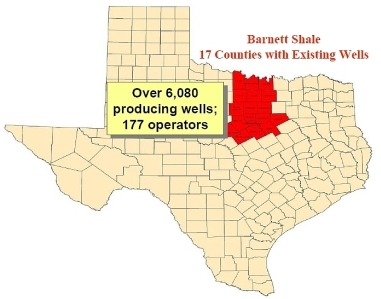The Texas Railroad Commission (RCC) will hold a special hearing January 10th to look into the complaints of methane in two Parker County drinking water wells that prompted the U.S. Environmental Protection Agency (EPA) this week to order a natural gas drilling company to take steps to remediate the problem. The RRC has not yet posted the starting time or place but we will let you know as we hear more.
Both the Railroad Commission and Range Resources, which drilled the Barnett Shale gas wells near the two homes affected by the methane-laden water, accused the EPA of acting in haste when they issued an order of remediation late Tuesday. Both the RRC and Range Resources claimed there was insufficient evidence to blame drilling operations for the situation. But critics of the drilling operations in North Texas suggested that the Railroad Commission was acting more as a booster than a regulator of the natural gas industry.
In its emergency order, the EPA said that its testing suggests that the gases found in the water and gases from Range’s wells “are likely to be from the same source.” The EPA also pointed out that there were no reports of methane in either of the two water wells that were drilled in 2002 and 2005 until after Range sunk its nearby gas wells in 2009.
In the Railroad Commission’s response to the EPA order, all three commissioners suggested the federal agency was needlessly overstepping its authority. And the commission included a detailed timeline showing the progress of its own investigation into the affected drinking water wells.
If you live in the Barnett Shale region and are concerned, we urge you to attend this hearing. We will post details about the hearing as soon as they are available.
If you are concerned that the RailRoad Commission is not being protective of the health and well-being of Texans, consider attending the Sunset Advisory Commission‘s hearing on the RRC and the Texas Commission on Environmental Quality next week, December 15th. See our earlier blog for details.
###
By promoting cleaner energy, cleaner government, and cleaner air for all Texans, we hope to provide for a healthy place to live and prosper. We are Public Citizen Texas.










